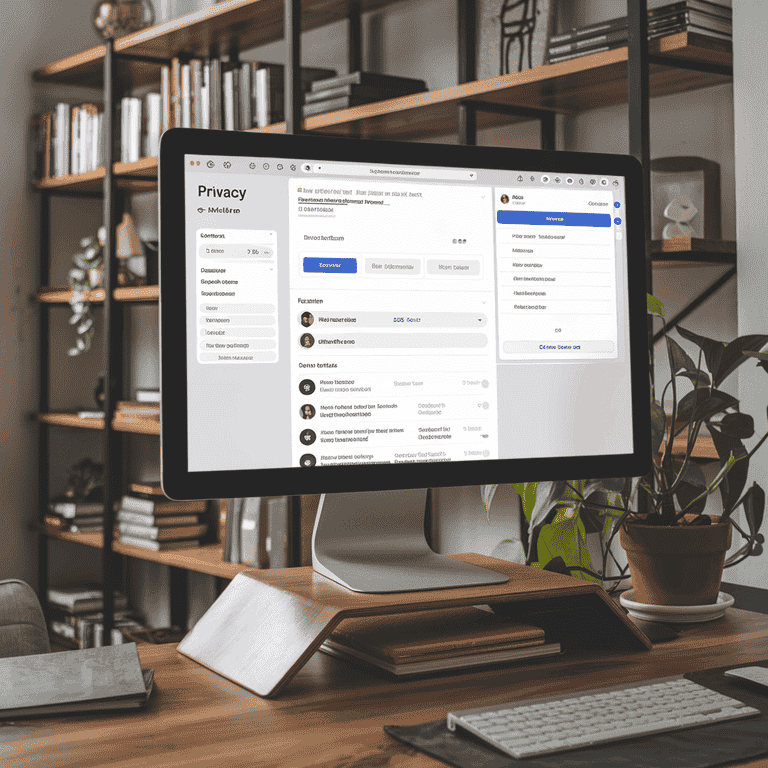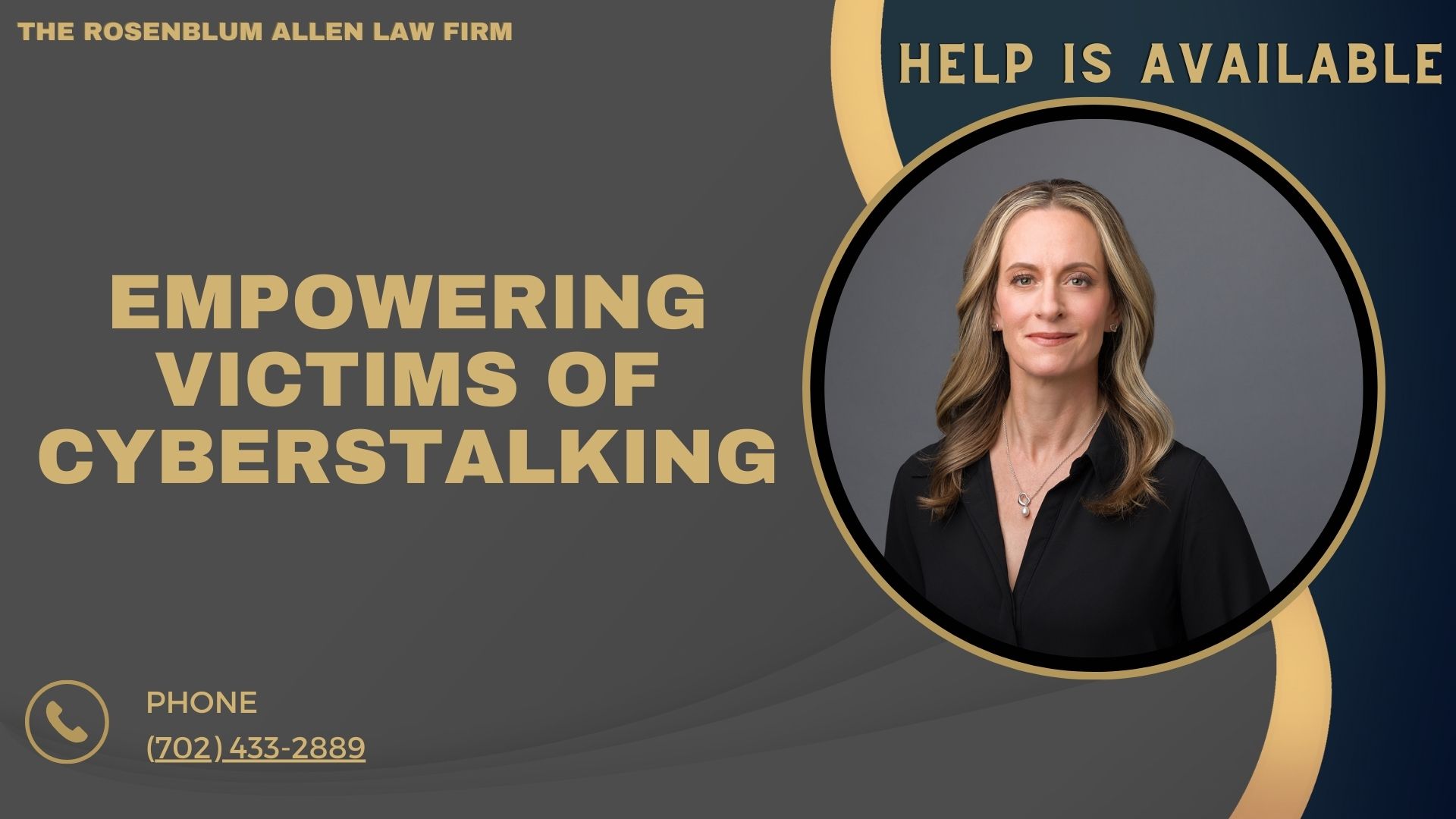This article provides an in-depth guide on resources for cyberstalking victims, covering essential hotlines, organizations, and mental health services. It also provides practical steps for protecting yourself, reporting incidents, and seeking legal support.
Whether you’re experiencing cyberstalking or supporting someone who is, these tools can offer vital support.
Understanding Cyberstalking and Its Impact
Forms of Cyberstalking
Cyberstalking can take many forms designed to control, harass, or intimidate. Common tactics include:
- Unwanted messages or emails: Persistent messaging, especially with harmful or inappropriate content.
- Social media stalking: Monitoring and commenting on your posts or creating fake profiles to track you.
- Threats and blackmail: Using fear tactics to make you comply with demands.
- Doxxing: Sharing personal information, such as your address or phone number, without consent.
- Tracking your location: Using apps, GPS, or even hacking your devices to track your whereabouts.
These behaviors are all designed to cause distress and can escalate over time. Knowing what cyberstalking looks like can help you recognize it early and take action.
Psychological and Emotional Impact of Cyberstalking
The emotional toll of cyberstalking is profound. Victims may experience:
- Anxiety and fear: The constant worry of being watched can affect your mental health.
- Depression: Many feel isolated or helpless, which can lead to depression.
- Loss of trust: Relationships and friendships may become strained.
- Sleep disturbances: Anxiety and fear often interfere with restful sleep.
Understanding these effects helps you know that what you’re feeling is normal. There are resources and people ready to support you through this.
Legal Implications and the Importance of Reporting
Cyberstalking is not only a severe invasion of privacy; it’s also a crime in many places. The specific laws vary by country and region, but many governments recognize cyberstalking as an offense. Reporting incidents isn’t just about stopping the harassment; it’s about creating a record and, in some cases, pressing charges to protect yourself legally.
If you’re unsure about the laws where you live, organizations like the Cyber Civil Rights Initiative offer resources to help you understand your rights.

Immediate Steps to Take if You’re Being Cyberstalked
Taking immediate action can help protect you and gather evidence if the stalking escalates. Here’s what to do:
How to Document and Preserve Evidence
Keeping a record of every incident is crucial for reporting and taking legal action. Evidence can support your case if you file a report with law enforcement or seek legal protection.
- Save Screenshots: Take clear screenshots of messages, emails, social media comments, or anything else that documents the cyberstalking behavior.
- Keep Text and Email Chains: Avoid deleting messages. Even if they are disturbing, they are essential evidence.
- Record Dates and Times: Note when incidents occur, as this can help establish a timeline.
- Organize in a Folder: Create a digital or physical folder to keep everything in one place. This can be helpful when discussing the case with authorities.
This evidence can be the backbone of any legal or protective action you take.
Protecting Personal Information
Safeguarding your personal information is another critical step to take. Cyberstalkers often exploit weak passwords and unsecured profiles to gather information about their victims. Here’s how to strengthen your defenses:
- Update Passwords: Use unique, strong passwords for each account, and consider using a password manager for extra security.
- Enable Two-Factor Authentication (2FA): Adding an extra step to log in can make it much harder for stalkers to access your accounts.
- Review Privacy Settings: Set accounts to private on social media and carefully select who can see your information.
Even small changes can make a big difference in protecting your online presence.
Reporting Cyberstalking Incidents
Reporting cyberstalking is crucial to protect yourself and help prevent further harassment. Depending on the platform and the severity of the behavior, you can report incidents to different entities.
- Social Media and Online Platforms: Most social media platforms have policies against harassment and stalking. Use their reporting features to flag harmful accounts or messages.
- Law Enforcement: If the stalking involves threats, blackmail, or other illegal actions, consider contacting your local police. Be sure to bring any evidence you’ve collected.
- Seek Legal Representation: In some cases, it may help to consult with a lawyer, especially if you’re dealing with severe or ongoing harassment. Many organizations provide free or low-cost consultations for victims of cyberstalking.
Reporting can feel intimidating, but it’s an essential step in protecting yourself.

Supportive Resources for Cyberstalking Victims
Finding the proper support can make a world of difference. Cyberstalking can feel isolating, but there are organizations, hotlines, and mental health services ready to help. Let’s explore these resources so you know exactly where to turn for assistance.
Hotlines for Immediate Help
If you need to speak with someone urgently or need advice on the next steps, hotlines can provide immediate support. Many of these services are available 24/7 and offer confidential assistance from trained professionals.
National Hotlines and Support Lines
- National Domestic Violence Hotline
- Phone: 1-800-799-SAFE (7233)
- Services: Provides support and resources for individuals experiencing harassment or abuse, including cyberstalking. They offer advice and safety planning and can direct you to local resources.
- VictimConnect Resource Center
- Phone: 1-855-4-VICTIM (1-855-484-2846)
- Services: Offers confidential support and guidance to victims of all types of crime, including cyberstalking. They can provide referrals to local organizations and help you create a safety plan.
- Crisis Text Line
- Text: HOME to 741741
- Services: Available for immediate support via text. Counselors can help you process the stress of cyberstalking and connect you with resources. This is particularly useful if you’re not comfortable talking on the phone.
Organizations Offering Support for Cyberstalking Victims
Several organizations specialize in supporting cyberstalking victims. They offer everything from emotional support to legal guidance, connecting you with resources that suit your unique situation.
Online Harassment Support Networks
- Cyber Civil Rights Initiative
- Services: This organization provides resources for victims of online harassment, including cyberstalking. It has a 24-hour crisis helpline and offers educational materials on protecting digital privacy.
- Working to Halt Online Abuse (WHOA)
- Services: WHOA offers guidance on preventing and responding to online harassment. Their website includes detailed advice on dealing with cyberstalkers and securing online accounts.
- Privacy Rights Clearinghouse
- Services: Focuses on privacy issues and online safety. They offer tips on minimizing your digital footprint and provide resources for reporting cyberstalking incidents.
Nonprofits Specializing in Victim Support
- The National Network to End Domestic Violence (NNEDV)
- Services: Offers resources and advocacy for individuals facing all forms of abuse, including digital abuse. Their Safety Net Project provides advice on staying safe online.
- RAINN (Rape, Abuse & Incest National Network)
- Services: While known for addressing sexual assault, RAINN also supports cyberstalking victims. They offer a 24/7 National Sexual Assault Hotline (1-800-656-HOPE) and connect victims with local services.
- National Center for Victims of Crime
- Services: This organization advocates for all crime victims, including cyberstalking victims. They provide referrals to legal and mental health resources and can guide you through the reporting process.
Legal Assistance and Advocacy Organizations
Navigating the legal aspects of cyberstalking can be overwhelming. These organizations help victims understand their rights and sometimes offer free or low-cost legal assistance.
- Legal Services for Victims
- Many legal aid organizations provide free or affordable services for cyberstalking victims. Check for local legal aid societies or contact the National Crime Victim Bar Association for referrals.
- Free and Low-Cost Legal Resources
- American Bar Association and LawHelp.org provide directories of lawyers specializing in cyberstalking and online harassment. You may also find pro-bono services available in some areas.
- Advocacy for Legislative Changes
- Organizations like the Cyber Civil Rights Initiative work to improve laws related to cyberstalking and advocate for victims’ rights. They also provide updates on new regulations that might protect you.

Mental Health Resources and Counseling for Cyberstalking Victims
The emotional impact of cyberstalking is significant, and many victims benefit from mental health support. Therapy, support groups, and online counseling can help you work through feelings of fear, anxiety, and isolation.
Mental Health Helplines and Support Networks
- National Alliance on Mental Illness (NAMI) Helpline
- Phone: 1-800-950-NAMI (6264)
- Services: NAMI provides guidance and resources for individuals dealing with mental health issues related to harassment. It can also help you find local support groups or mental health providers.
- SAMHSA’s National Helpline
- Phone: 1-800-662-HELP (4357)
- Services: Offers free, confidential support and treatment referrals for mental health and substance abuse, which can be beneficial if you’re struggling with trauma from cyberstalking.
Accessing Therapy for Trauma and Anxiety
Therapy can be a vital part of the recovery process. Many therapists specialize in trauma, anxiety, and coping with harassment. Consider the following options:
- Finding Specialized Therapists and Counselors
- Look for mental health professionals who specialize in trauma or online harassment. Websites like Psychology Today and Therapy Den allow you to filter therapists by their areas of expertise.
- Online Therapy Options for Remote Support
- BetterHelp and Talkspace provide online therapy options, which can be helpful if you’re not comfortable visiting a therapist in person. Many platforms offer licensed therapists experienced in dealing with trauma and anxiety.
Self-Care and Coping Strategies
Taking care of yourself during this time is crucial. Simple self-care practices can help reduce stress and improve your emotional well-being.
- Developing a Support System
- Reach out to friends or family members who can offer emotional support. Having someone to talk to can make a big difference.
- Mindfulness and Stress Management Techniques
- Practicing mindfulness or relaxation exercises can help you manage anxiety. Consider apps like Headspace or Calm for guided meditation sessions.
Practical Safety and Privacy Tips for Cyberstalking Victims
Protecting yourself online is essential if you’re dealing with cyberstalking. Securing your devices and accounts and managing your online presence carefully can make it much harder for a cyberstalker to invade your privacy. Here are some practical steps to protect yourself and reduce the risk of continued harassment.
Securing Devices and Accounts
Cyberstalkers often gain access through weak passwords, unsecured devices, or shared connections. Securing your devices and accounts is your first line of defense.
- Essential Security Measures for Phones and Computers
- Install Security Software: Antivirus software protects against spyware or malware. Many options are accessible and practical.
- Update Regularly: Ensure your operating system and apps are updated. Updates often include security patches that keep devices safer.
- Use Device Lock Features: Activate screen locks with a PIN, fingerprint, or face recognition. This simple step prevents unauthorized access.
- Using Encrypted Messaging and Secure Browsers
- Encrypted Messaging Apps: Apps like Signal and WhatsApp use end-to-end encryption, which makes your conversations private and secure.
- Secure Browsers: Browsers like Tor and Brave offer enhanced privacy settings that hide your activity from potential cyberstalkers.
- Avoiding Public Wi-Fi for Sensitive Communications
- Public Wi-Fi networks can be risky. Cyberstalkers or hackers might use these networks to intercept your data.
- When you must use public Wi-Fi, connect through a Virtual Private Network (VPN), which encrypts your data and adds a layer of security.
These steps can dramatically reduce the risk of someone accessing your personal information through your devices.

Protecting Your Online Presence and Digital Footprint
Managing your digital footprint is another powerful way to deter cyberstalkers. Minor changes to your online presence can make you harder to track and less vulnerable.
- Adjusting Social Media Privacy Settings
- Limit Who Can See Your Posts: Most platforms allow you to control who sees your content. Set your profile to private, or limit posts to friends only.
- Review Friend and Follower Lists: Remove or block people you don’t know or trust.
- Turn Off Location Sharing: Avoid posting your location, especially in real-time. This prevents cyberstalkers from tracking your movements.
- Conducting Regular Online Searches to Monitor Information
- Search Your Name and Photos: See what information is available about you online. Google yourself periodically and check social media to identify any potential risks.
- Request Content Removal: Many platforms allow you to request that certain content be removed. Contact site administrators if any posts or images make you feel unsafe.
- Utilizing “Do Not Track” Features and VPNs
- Enable Do Not Track on your browser to limit how much information websites collect about you.
- Use a VPN (Virtual Private Network) for an extra layer of protection. VPNs can hide your IP address, making it harder for a cyberstalker to track your online activity.
These privacy settings give you back control, making it much harder for a cyberstalker to monitor your online activities.
Setting Boundaries and Communicating with Stalkers
Set boundaries if you’re dealing with a cyberstalker. Avoiding direct interaction with the person is often the safest approach, but if communication is necessary, take precautions.
- Avoiding Direct Contact with Cyberstalkers
- Avoid responding to messages or engaging in any conversation. This can reduce the chance of escalation.
- If you must communicate, consider using a third-party mediator or a lawyer to maintain distance.
- Seeking Restraining Orders or No-Contact Orders
- Restraining Orders: In many regions, you can apply for a restraining or protective order, which legally prevents the stalker from contacting you.
- No-Contact Orders: These orders are similar to restraining orders but may apply specifically to communication, like messages or emails.
- Consult with a lawyer or contact local victim advocacy services to learn more about your options for legal protection.
- Identifying and Managing Unwanted Communications
- Use spam filters and blocking features on email and social media accounts to filter out unwanted messages.
- If harassment continues on new accounts or platforms, report them immediately and document each incident.
Setting boundaries can be empowering and is crucial for your safety. These steps help you regain control and establish limits, making it clear to the cyberstalker that their behavior is unacceptable and will not be tolerated.
Long-Term Strategies for Recovery and Empowerment
Beyond securing your online presence, focusing on your mental and emotional well-being is essential. Cyberstalking can have a long-lasting impact, but building a support network and empowering yourself legally and personally can help you move forward confidently.
Building a Support Network
A strong support network can provide emotional comfort and practical assistance. Surrounding yourself with people who understand your situation makes recovery more accessible and less isolating.
- Reaching Out to Friends, Family, and Support Groups
- Share your experience with close friends or family who can offer emotional support.
- Support groups, both online and offline, can connect you with others who’ve been through similar situations. Organizations like NAMI often have group sessions that can be comforting.
- Finding Peer Support Through Cyberstalking Victim Networks
- Join networks designed explicitly for cyberstalking victims. These networks often provide peer support, resources, and a safe space to discuss your experiences.
- Online communities like the Cyber Civil Rights Initiative’s support groups or subreddits dedicated to cyberstalking victims can be valuable sources of advice and solidarity.
- Joining Online Communities for Shared Healing
- Many online communities are available for victims of digital abuse. Websites like DailyStrength and 7 Cups of Tea offer discussion boards where people can share stories, advice, and encouragement.
A support network is not just about having people to lean on; it’s about knowing others truly understand your experience.
Legal and Personal Empowerment
Educating yourself about your rights and legal options is a powerful way to regain control. This knowledge can help you feel more secure and informed about handling cyberstalking in the future.
- Steps to Stay Informed on Cyberstalking Laws
- Research cyberstalking laws in your area. Many legal resources are available online, or you can contact local law firms specializing in cybercrime.
- Organizations like Cyber Civil Rights Initiative offer up-to-date information on relevant laws and can answer questions about your rights.
- Educating Yourself on Rights and Resources
- Knowing your rights is empowering. Websites like VictimConnect and the National Center for Victims of Crime provide legal information and practical advice.
- Many local libraries and advocacy groups also offer free resources and workshops on understanding your rights as a cyberstalking victim.
- Sharing Your Story to Raise Awareness
- If you feel comfortable, sharing your story can empower others. Whether you speak anonymously or publicly, your experience can raise awareness about cyberstalking and encourage others to seek help.
- Some victims write blogs, participate in community forums, or share their stories with advocacy organizations to help spread awareness.
These steps help you reclaim your sense of control, help others understand the impact of cyberstalking, and encourage communities to support victims.
In taking these actions, you’re protecting yourself and actively rebuilding your sense of safety and empowerment. Recovery is a journey, but you can regain control over your life with the right resources, support, and knowledge. Remember, help is available; you don’t have to face cyberstalking alone.

Breaking It All Down
Overcoming the effects of cyberstalking takes time and courage. But by reaching out for help, securing your digital life, and focusing on your emotional well-being, you can regain control and move forward. The resources and steps outlined here will support you in this journey.
Cyberstalking can feel isolating and intimidating, but remember, people, organizations, and communities are dedicated to helping you. From hotlines and counseling to legal support and practical security tips, tools, and support networks are ready to stand by your side.
Seeking help isn’t a sign of weakness; it’s a decisive step toward regaining control. You are actively moving toward a safer, healthier future by reaching out, protecting your online presence, and building a support network.

Frequently Asked Questions
What is cyberstalking, and how is it different from other forms of online harassment?
Cyberstalking is a form of online harassment where the stalker persistently monitors, contacts, or threatens a person online. Unlike general harassment, cyberstalking is often continuous and intrusive, creating a sustained sense of fear or anxiety for the victim. It may include following someone’s social media accounts, sending unwanted messages, or tracking their location.
Can I get help if I’m being cyberstalked but don’t know the identity of my stalker?
Yes. Many organizations and support services can assist you even if the stalker’s identity is unknown. Documenting evidence, securing your accounts, and contacting hotlines or legal services are still highly effective ways to protect yourself.
How can I tell if someone is tracking my location digitally?
Signs of digital tracking include unusual battery drainage, unfamiliar apps or software on your devices, and alerts that your location is being accessed. Security software and regularly updating your device’s operating system can help detect or prevent tracking. If you suspect tracking, consult a digital security professional or a support organization specializing in online privacy.
What should I do if my cyberstalker escalates to physical stalking?
If your stalker’s actions shift from digital harassment to physical threats or stalking, it’s essential to contact law enforcement immediately. Continue documenting all incidents and contact victim support services, as they can help with safety planning and provide resources specific to physical stalking.
Can I report cyberstalking anonymously?
Some platforms allow anonymous reporting, especially for harmful online content. However, you may need to provide identifying information for law enforcement or legal cases to build a strong case. You can still maintain privacy by using victim advocacy services, which can help guide you through the reporting process confidentially.
What’s the difference between a restraining order and a no-contact order?
Both restraining and no-contact orders limit an individual’s ability to contact you. A restraining order is typically broader, preventing the stalker from being near you physically or communicating with you digitally. A no-contact order is more specific to prohibiting direct or indirect communication (e.g., messages, calls, emails). Your local law enforcement or legal aid organization can help determine the most appropriate order type.
Can I take legal action against someone who is cyberstalking me from another state or country?
Yes, but cross-border cyberstalking cases can be complex. Many countries and states have cyberstalking laws and international organizations are working to address cross-border harassment. Consulting with a lawyer or an organization specializing in cybercrime can clarify your options.
Are there online support groups specifically for cyberstalking victims?
Yes, several organizations offer online support groups. Websites like DailyStrength, 7 Cups of Tea, and some nonprofits provide moderated forums or support groups for cyberstalking victims. These groups allow you to connect with others who have faced similar experiences in a safe, anonymous environment.
What self-care practices help deal with cyberstalking stress?
Self-care practices like mindfulness, meditation, and connecting with trusted friends or family can help manage stress. Using relaxation apps or joining support groups can also be beneficial. Physical activities, regular sleep, and finding supportive hobbies help reduce anxiety and maintain a positive outlook.
Can a therapist help with the trauma of being cyberstalked?
Yes, many therapists specialize in trauma, including cyberstalking and digital harassment. Therapy can provide coping mechanisms and emotional support, helping you process the impact of cyberstalking. Online therapy options are also available if you prefer remote support.
What should I look for in an attorney to pursue legal action against a cyberstalker?
Look for attorneys who specialize in cybercrime, harassment, or stalking. Many law firms and legal aid organizations know cyberstalking cases and can guide you on your rights, evidence collection, and reporting. Some organizations also provide free or low-cost consultations to help you get started.
Is it possible to completely secure my online presence from a cyberstalker?
While it’s challenging to be entirely immune to cyberstalking, taking steps like enabling two-factor authentication, using strong passwords, and limiting personal information online can significantly enhance your security. Regularly reviewing privacy settings and using secure messaging apps adds further protection.
What role do social media platforms play in preventing cyberstalking?
Social media platforms have reporting tools and privacy settings to help users protect themselves from cyberstalking. Many platforms allow you to block users, report harassment, and control who can view your profile or posts. Reporting policies vary by platform, so reviewing each platform’s safety options can help.
How do I know if I need professional help to deal with the effects of cyberstalking?
If cyberstalking impacts your sleep, mood, relationships, or general well-being, professional help could be beneficial. Therapists or support groups can provide guidance and tools to help you manage anxiety, regain confidence, and process any trauma from the experience.

Glossary
Cyberstalking: A form of harassment that occurs through digital platforms, where the stalker persistently monitors, threatens, or intimidates the victim. Cyberstalking often involves using social media, emails, or other online tools to invade the victim’s privacy.
Digital Footprint: The trail of information a person leaves online through their actions, such as social media posts, online purchases, or search history. Managing your digital footprint can help protect your personal information from cyberstalkers.
Doxxing; A harmful practice where someone publicly shares private information (like addresses, phone numbers, or personal details) without consent, often to intimidate or harass the individual. Cyberstalkers sometimes use doxxing to make their victims feel unsafe.
Encryption: A security measure that protects information by converting it into code to prevent unauthorized access. Encrypted messaging apps use this technology to ensure that only the intended recipient can read messages, adding a layer of privacy.
End-to-End Encryption: A form of encryption where only the communicating users (sender and receiver) can read the messages. This protects messages from being accessed by third parties, including the service provider.
Evidence Preservation: The process of collecting and securely storing information or proof of harassment. Evidence preservation includes taking screenshots, saving emails or messages, and documenting incidents, which can be crucial for reporting cyberstalking.
No-Contact Order: A legal order that prevents a person from contacting another individual. No-contact orders can apply to digital communications (like texts or emails) and are often used to protect cyberstalking victims.
Restraining Order: A broader legal order that restricts a person from approaching or interacting with another. Restraining orders can prevent both physical and digital contact, providing comprehensive protection for victims of harassment, including cyberstalking.
Two-Factor Authentication (2FA): A security process that requires users to provide two forms of identification before accessing an account. This often includes a password and a code sent to a trusted device. 2FA makes it harder for cyberstalkers to gain access to online accounts.
Virtual Private Network (VPN): A tool that enhances online privacy by encrypting your internet connection and hiding your IP address. VPNs can make it harder for cyberstalkers to track your online activity, especially when using public Wi-Fi networks.
Location Tracking: The monitoring of an individual’s location using GPS, apps, or other technology. Some cyberstalkers may attempt to track victims’ locations to gather information or intimidate them.
Victim Advocacy Services: Organizations that provide support, resources, and legal guidance to individuals experiencing harassment or abuse. Victim advocacy services often work with law enforcement and legal professionals to protect victims’ rights.
Privacy Settings: Options on social media platforms and other digital services that control who can view your content and information. Adjusting privacy settings can help reduce visibility to cyberstalkers and protect your personal data.
Support Network: A group of people or organizations that offer emotional and practical support. This network can include friends, family, support groups, or victim advocacy organizations, all of whom can help a victim recover and regain control.
Online Harassment: Any form of bullying, intimidation, or abuse conducted via digital platforms. Cyberstalking is a severe type of online harassment, characterized by persistent and targeted behavior.
Mental Health Helpline: A phone service that provides immediate support, counseling, or guidance to individuals dealing with emotional distress. Many helplines offer specialized services for victims of cyberstalking or online harassment.
Safe Browsing: The practice of using privacy-focused tools, secure websites, and protective measures to enhance online security. Safe browsing can include using secure browsers, avoiding public Wi-Fi, and practicing caution when sharing personal information online.
Legal Aid: Assistance provided by organizations or attorneys to individuals seeking legal advice or representation, often free or low-cost for victims of abuse or harassment. Legal aid services can help cyberstalking victims understand their rights and pursue protective actions.
Self-Care: Personal practices aimed at maintaining physical, mental, and emotional well-being. For victims of cyberstalking, self-care might include stress management techniques, therapy, and connecting with support networks.

Additional Resources for You from The Rosenblum Allen Law Firm.
In addition to the resources already mentioned, our lead attorney, Molly Rosenblum Allen, Esq., has created several other valuable guides to assist you during this challenging time:
- Criminal Defense Attorneys: Comprehensive guidance on various criminal defense strategies and procedures.
- Las Vegas DUI Lawyer: Effective advice on handling DUI charges in Las Vegas, including potential defenses and consequences.
- Domestic Violence Lawyer Las Vegas: Information on domestic violence laws, protective orders, and defense strategies.
- Drug Possession Lawyer: Insights into drug possession laws, penalties, and potential defense approaches.
- Sex Crimes Attorney: Detailed information on sex crime laws, defenses, and the legal process.
- CPS Defense Attorney: Guidance on dealing with Child Protective Services investigations and related legal issues.
- Misdemeanor Lawyer: Information on misdemeanor charges, their potential impacts, and defense strategies.
- Las Vegas Warrant Defense Attorney: Advice on handling outstanding warrants and navigating the legal system.
- Las Vegas Probation Violation Attorney: Guidance on probation terms, violations, and potential consequences.
- Theft Crime Defense Lawyer: Information on various theft crimes, their penalties, and possible defenses.
- Kidnapping Lawyers: Detailed explanation of kidnapping laws, penalties, and defense strategies.
- Juvenile Defense Lawyers: Specialized information on juvenile law, procedures, and defense approaches.
- Firearms Lawyer Las Vegas: Guidance on firearm laws, rights, and legal issues related to gun ownership and use.
These resources are designed to provide you with valuable information and support as you navigate your legal journey. We encourage you to explore these guides to gain a better understanding of your situation and options.

Offsite Resources for You
- StopBullying.gov: A comprehensive government website offering information and resources on bullying and cyberbullying prevention.
- Common Sense Media: Provides resources for parents and educators on digital citizenship and online safety.
- Cyberbullying Research Center: Offers up-to-date information on the nature, extent, causes, and consequences of cyberbullying.
- PACER’s National Bullying Prevention Center: Provides resources for parents, schools, teens and youth to address bullying.
- NetSmartz: An educational program by the National Center for Missing and Exploited Children that provides age-appropriate resources to help teach children how to be safer online.
- ConnectSafely: Offers research-based safety tips, advice, news and commentary on all aspects of tech use and policy.
- National Crime Prevention Council: Provides resources and information on various crime prevention topics, including cyberbullying.

A Special Message from Our Lead Attorney, Molly Rosenblum Allen, Esq

Dear Reader,
Thank you for taking the time to explore these resources. At The Rosenblum Allen Law Firm, we understand how overwhelming it can feel to face challenging situations, and we’re here to support you. If you’re ready to take the next step, my team and I would be honored to help guide you through this process. Please don’t hesitate to call us at (702) 433-2889 so we can get the ball rolling and start working on a solution together.
We look forward to being in your corner.






